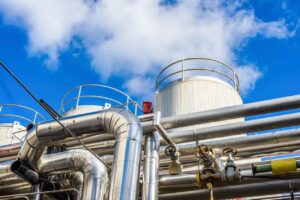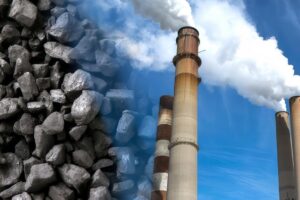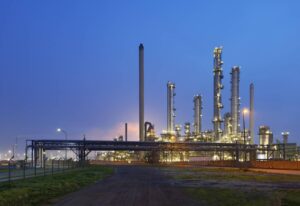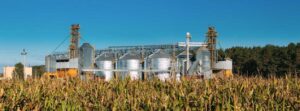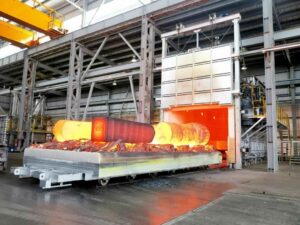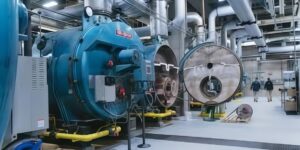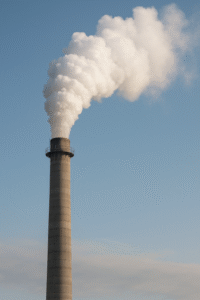With the continuous development of science and technology, gas analysis technology plays an important role in environmental monitoring, industrial production, medical diagnosis and other fields. Among them, extractive gas analyzer and in-situ gas analyzer are two common gas analysis methods, each with unique advantages and applicable scenarios. This Blog will make a detailed comparison of these two analysis methods from the perspective of technical principles and applications.
Understanding Extractive Gas Analyzers!

Extractive gas analyzer is a gas analysis technology. Its working principle is based on extracting the target gas components from the gas sample, converting them into liquid or solid form, and then analyzing the extracted substances to determine the content of the target gas. . This method is often used in gas analysis scenarios where high sensitivity and accuracy are required.
The main steps of the work include
- sampling:
Collect samples from gas mixtures. This usually involves using a sampling device, such as a gas sampler or sorbent tube, to capture the gas to be analyzed from the environment.
- extraction:
The collected gas samples are processed to make the target gas chemically react with specific adsorption materials or extraction agents to form liquid or solid compounds. This process can increase the concentration of the target gas, thereby increasing the sensitivity of the subsequent analysis.
- analyze:
The extracted substances undergo a series of analysis methods, such as chromatographic analysis, mass spectrometry, spectral analysis, etc., to determine the concentration of the target gas. The analysis method will be selected according to the actual situation and the nature of the target gas.
The advantage of the extractive gas analyzer is that it can eliminate impurities and interfering substances in the gas sample, thereby improving the accuracy and reliability of the analysis. This method is widely used in environmental monitoring, food safety, drug research and development, etc., especially for scenes that need to track trace gas components. But it can also be limited by time delays in sample pretreatment steps as well as equipment complexity.
In-depth research on extraction type analyzers!

As a gas analysis technology, extractive gas analyzer has a series of advantages and disadvantages, which are introduced below:
Advantage
- High sensitivity:
The extraction process can be better controlled in a laboratory setting, so high analytical sensitivity can be achieved, capable of detecting very small concentrations of target gas components.
- Sample pretreatment:
The extraction process can usually remove interfering substances in gas samples, such as other gas components, particulate matter, etc., thereby improving the accuracy and reliability of the analysis.
- Widely applicable:
Extractive gas analyzers are suitable for applications that require high precision and accuracy, such as environmental monitoring, food safety, medical diagnosis, etc., especially in scenarios where trace gas components need to be analyzed.
- Sample Stability:
The extraction process converts the gas sample into a liquid or solid state, which can improve the stability of the sample and reduce the analysis error caused by the gas fluctuation.
Shortcoming:
- time delay:
Since the extraction process takes time, there is a certain time delay in the analysis results, which is not suitable for scenarios that require real-time monitoring, such as certain industrial process control.
- Complexity:
The extraction process can be complex and requires expertise and equipment. This increases operational difficulty and equipment maintenance costs, which may limit the application of this technology in some scenarios.
- Sample loss:
There may be a certain degree of sample loss during the extraction process, which affects the accuracy of the analysis.
- Not suitable for some gases:
Because of the chemical reactions involved in the extraction process, some gases may not be suitable for this method of analysis, or require special handling steps.
On the whole, extractive gas analyzers have great advantages in applications that require high precision and accuracy. However, it is necessary to weigh its advantages and disadvantages according to specific application scenarios and requirements, and choose an appropriate analysis method.
Application field of extractive gas analyzer!
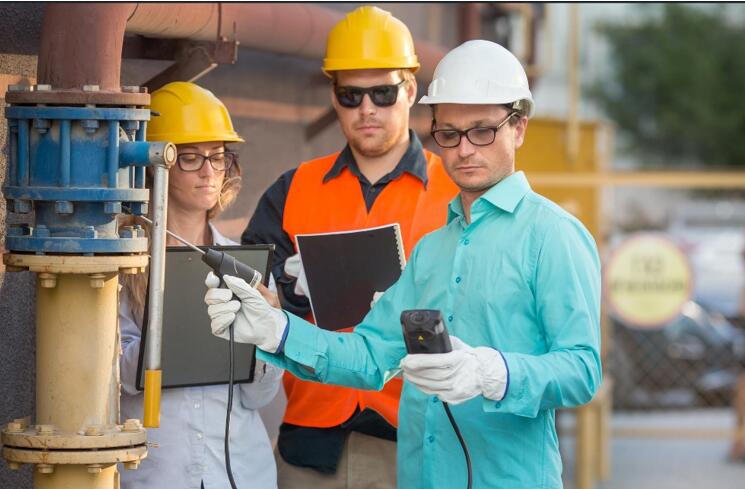
Extractive gas analyzers are widely used in many fields, especially in gas analysis scenarios that require high precision and accuracy. The following are some major application areas:
- Environmental monitoring:
Extractive gas analyzers are commonly used in air pollution monitoring and can detect various harmful gases in the air, such as volatile organic compounds (VOCs), nitrogen oxides (NOx), hydrogen sulfide (H2S), etc. This helps to monitor urban air quality and assess the level of environmental pollution.
- food safety:
During food processing and storage, some gas components may affect the quality and safety of food. Extractive gas analyzers can be used to detect gas components in food, such as volatile gases and oxygen content in food.
- Medical diagnosis:
Extractive gas analyzers are also used in the medical field, for example to measure the composition of exhaled gas. Some gas components in exhaled breath can be used as biomarkers for disease diagnosis, such as nitric oxide (NO) in exhaled breath is closely related to asthma.
- Industrial Process Control:
In industrial production, certain gas components can affect the efficiency and quality of the production process. Extractive gas analyzers can be used to monitor gas content in industrial processes to help adjust production parameters and improve production efficiency.
- Virus detection:
In virus detection, changes in some gas components may be associated with disease states. Extractive gas analyzers can detect gas components in organisms or secretions, providing clues for early diagnosis of diseases.
- scientific research:
In scientific research experiments, when highly sensitive and accurate gas analysis is required, extractive gas analyzers can be used to measure trace gas components, thereby helping researchers gain insight into chemical and biological processes.
- Safety monitoring:
In some hazardous environments, such as chemical storage areas or mines, extractive gas analyzers can be used to monitor the presence of harmful gases and give early warning of potential safety risks.
- Climate Research:
Extractive gas analyzers can also be used in climate research, such as monitoring the concentration of greenhouse gases in the atmosphere, such as carbon dioxide and methane, to understand their impact on climate change.
On the whole, extractive gas analyzers play a key role in many fields, helping people to perform accurate gas analysis, thus promoting the development of environmental protection, health monitoring, industrial production and other fields.
Understanding In Situ Gas Analyzers!

An in situ gas analyzer is a device used to perform analysis where a gas sample is located. It can be measured directly at the gas sampling point or monitoring point without taking the gas sample into the laboratory or processing equipment. This analytical instrument can monitor changes in gas composition in real time, thus providing immediate data feedback.
The working principle of in-situ gas analyzers is usually based on different detection techniques, such as spectral analysis, electrochemical analysis, thermal conductivity, etc. The steps of in-situ gas analyzers mainly involve the processes of sample collection, detection and data analysis. These steps may vary depending on the specific detection technique and equipment used, but generally include the following basic steps:
- Sample Collection:
Sample collection is the first step in in situ gas analysis. This may involve taking gas samples from the environment, which can be done with devices such as gas samplers, probes or pipes. Sampling methods and equipment vary by application.
- Gas transmission:
The collected gas samples need to be transported to the detection part of the analytical instrument through channels such as pipelines and sensors. During the transmission process, the original characteristics of the sample should be kept as far as possible to avoid contamination or composition change.
- Detection technology application:
In analytical instruments, analysis is performed using specific detection techniques. This may involve spectroscopic analysis, electrochemical analysis, thermal conductivity analysis, etc. The detection technique is selected according to the required accuracy, sensitivity and target gas characteristics.
- Data collection and processing:
Inspection technologies generate raw data that needs to be acquired, processed and analyzed. The test results may be presented in the form of digital signals or graphs.
- Calibration and calibration:
In-situ gas analyzers need to be calibrated before use to ensure that their measurements are accurate and reliable. Calibration usually involves using a standard gas of known concentration to adjust the parameters of the instrument.
- Data Analysis and Interpretation:
The data obtained from the instrumentation needs to be analyzed and interpreted to determine the gas composition and concentration in the sample. This may require the use of calibration curves, standard samples or other analytical methods
- Report generation and output:
The final results can be output in the form of reports, charts or data files for further analysis or decision-making by users.
- Care and maintenance:
In situ gas analyzers require regular maintenance and care to maintain their performance and accuracy. This may include cleaning, replacement parts, calibration, etc.
It should be noted that the steps of each in-situ gas analyzer may vary due to different technical characteristics and application fields. Before use, the user should read the operation manual of the equipment in detail and operate in accordance with the manufacturer’s instructions to ensure correct use and accurate analysis. These techniques can be implemented on-site to analyze the composition and concentration in gas samples.
Advantages and disadvantages of in-situ gas analyzer
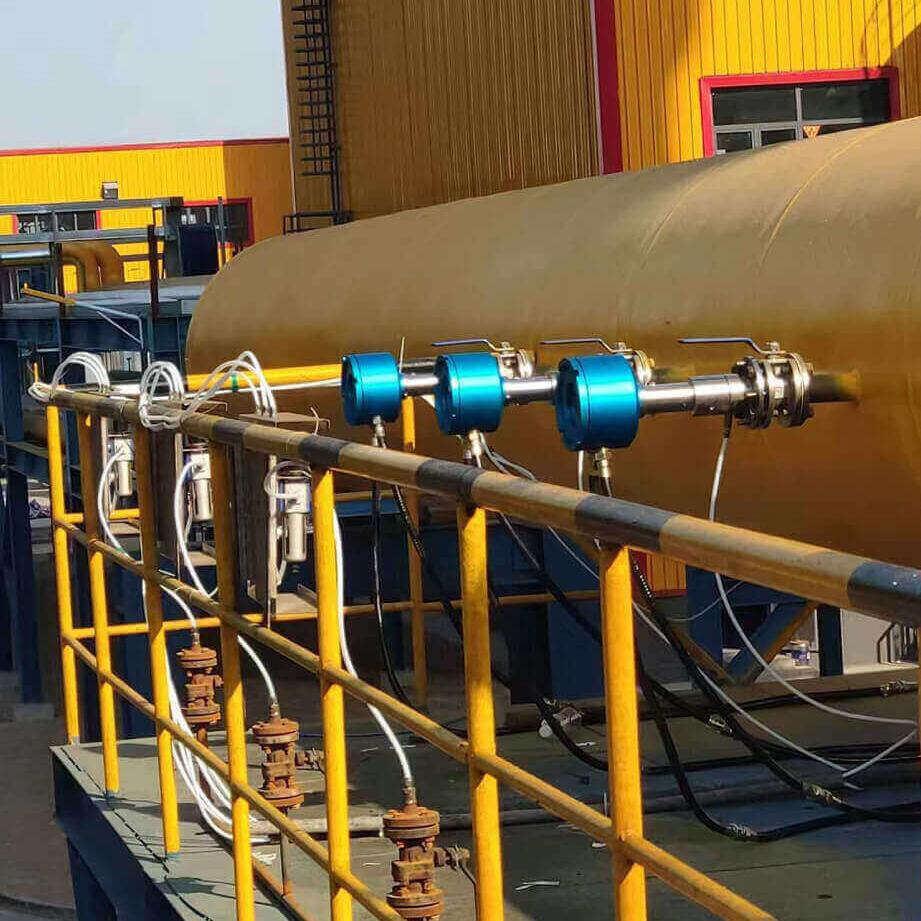
In-situ gas analyzers, as a technology for real-time monitoring of gas composition, have a range of advantages and disadvantages. Here are their main features:
Advantage:
- real-time monitoring:
The in-situ gas analyzer can monitor in real time where the gas sample is located, without the need to collect the sample to the laboratory for processing, and provide instant data feedback.
- High spatio-temporal resolution:
Due to the on-site analysis, the in-situ gas analyzer can capture the instantaneous change of gas composition with high spatial and temporal resolution.
- accuracy:
During on-site analysis, possible errors during sample collection and transmission are avoided, thereby improving the accuracy of analysis.
- Practicality:
In situ gas analyzers have utility in many applications, especially where fast response and timely monitoring are required.
- No distractions:
The analysis is carried out directly at the sampling point, which reduces possible sample contamination and composition changes, and avoids the influence of interfering substances.
- Adapt to diverse environments:
The in-situ gas analyzer is suitable for various environments, including indoors, outdoors, industrial production sites, etc., and can adapt to a variety of application scenarios.
Shortcoming:
- Restrict analysis components:
In-situ gas analyzers usually only detect a specific component or group of components and are not suitable for situations where multiple gases need to be analyzed simultaneously.
- Sensitivity limited:
Due to the direct on-site analysis, the sensitivity of some detection techniques may be limited to the level of laboratory analysis.
- Device complexity:
In-situ gas analyzers may require complex instruments and techniques, requiring professional knowledge for operation and maintenance, which increases equipment costs and barriers to use.
- Environmental interference:
Conditions such as temperature and humidity in the on-site environment may affect the analysis results, and appropriate interference correction is required.
- Maintenance Difficulty:
The equipment used in the field is easily affected by environmental conditions and requires regular maintenance and maintenance, which increases the difficulty of maintenance.
Taken together, in-situ gas analyzers have obvious advantages in applications that require real-time monitoring and rapid response. However, when choosing, you need to weigh its advantages and disadvantages according to specific application requirements to determine whether it is suitable for a specific scenario.
Application field of in-situ gas analyzers!
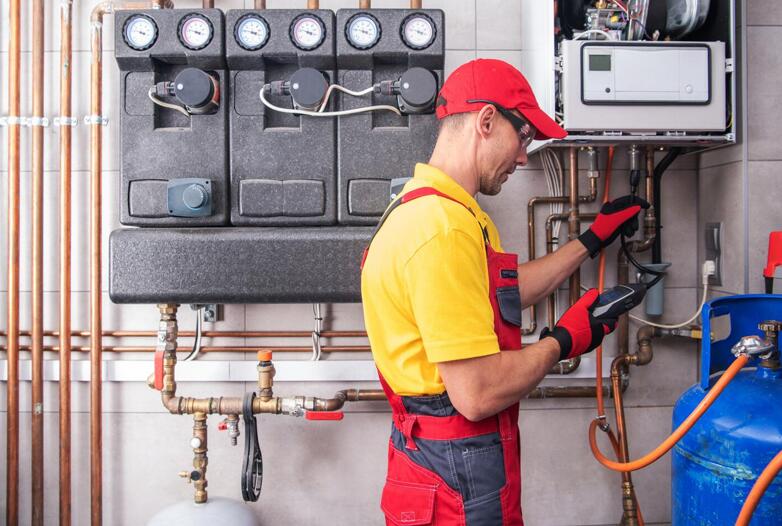
In-situ gas analyzers are widely used in many application fields due to their real-time monitoring and fast response characteristics. The following are some major application areas:
- Industrial Process Control:
In-situ gas analyzers are used to monitor gas components in industrial production processes, such as chemical reactions, combustion processes, etc., to achieve optimization and control of production processes.
- Environmental monitoring:
In the field of environmental protection, in-situ gas analyzers can be used to monitor pollutants in the air, such as sulfur dioxide (SO2), nitrogen oxides (NOx), ozone (O3), etc.
- Fire Monitoring:
In buildings, factories and other places, in-situ gas analyzers can monitor harmful gases such as smoke and carbon monoxide (CO), and issue alarms in time to prevent fire accidents.
- Energy production and storage:
In energy fields such as oil and natural gas, in-situ gas analyzers can be used to monitor the composition of gas to ensure production safety and optimization.
- medical health:
In medical equipment, such as ventilators, anesthesia equipment, etc., in-situ gas analyzers are used to monitor the patient’s breathing gas to ensure proper oxygen supply and ventilation.
- Health and safety:
In public places or food processing fields, in-situ gas analyzers can monitor bacteria, harmful odors, etc. to ensure hygiene and safety.
- Climate Research:
In situ gas analyzers can be used to monitor the amount of greenhouse gases in the atmosphere, such as carbon dioxide and methane, to provide data for climate research.
- Experimental Study:
In scientific research, in situ gas analyzers can be used to monitor gas reactions during experiments, helping researchers understand chemical and biological processes.
- Sewage treatment:
In wastewater treatment plants, in-situ gas analyzers can monitor gases in wastewater, such as hydrogen sulfide (H2S), to ensure the effectiveness and safety of the treatment process.
To sum up, in-situ gas analyzers play a key role in many fields, helping real-time monitoring and analysis of gas components, and promoting the development of environmental protection, safety production, medical and health and other fields.
Differences between extractive gas analyzers and in situ gas analyzers
Below is a more detailed table listing some of the detailed differences between extractive gas analyzers and in situ gas analyzers, including principles, techniques used, gases that can be detected, installation costs, advantages, disadvantages, and areas of application.
| Difference | Extractive Gas Analyzer | In Situ Gas Analyzer |
| principle | The target gas is extracted from the gas sample, converted into liquid or solid form, and then quantitatively analyzed. | Real-time analysis at the gas sampling point or monitoring point without transferring the sample to the laboratory. |
| technology used | – Extraction techniques such as adsorption, sorbent reaction, etc. – Analytical techniques such as gas chromatography (GC), mass spectrometry (MS), etc. | – Spectroscopic techniques, such as infrared spectroscopy, ultraviolet-visible spectroscopy, etc. – Electrochemical sensors. – Thermal conductivity detection. |
| detectable gases | Depending on the sorbent and analytical technique used, various gas components can be detected. | Depending on the sensor or detection technology used, specific gases or groups of gases can be detected. |
| installation fee | Relatively high, involving sample collection devices, analytical instruments, etc., requiring professionals to install and maintain. | Relatively low, usually only need to install sensors or instruments at the monitoring point, and the maintenance cost is also low. |
| advantage | – High sensitivity and accuracy. – Sample pretreatment to reduce interfering substances. – Suitable for high precision applications. | – Real-time monitoring, quick response. – High spatio-temporal resolution. – Suitable for applications that require instant data. |
| shortcoming | – time delay. – High complexity and difficult equipment maintenance. – Not suitable for real-time monitoring. | – Limit analysis components. – Some technical sensitivity is limited. – Complex equipment and difficult maintenance. |
| features | – Suitable for stable samples, suitable for laboratory environment. – Can handle trace gases. – Suitable for scenarios that require high-precision analysis. | Provides real-time data and is suitable for dynamic environments. – Rapid monitoring, suitable for emergency response. – Direct monitoring on site to avoid sample collection errors. |
| Application field | – Environmental monitoring. – food safety. – Medical diagnosis. – Scientific research. – Virus detection. | – Industrial process control. – Environmental monitoring. – Fire monitoring. – medical health. – Climate studies. |
differences and characteristics of extractive and in-situ gas analyzers in different aspects. However, remember that the actual choice needs to be weighed according to the specific application needs.
Conclusion
According to the above characteristics, the extractive gas analyzer is suitable for applications that have high requirements on gas composition and real-time performance is not the primary consideration, such as in-depth research in scientific research laboratories. The in-situ gas analyzer is more suitable for scenarios that require timely monitoring and control, such as real-time process control and environmental pollution monitoring at industrial production sites.
To sum up, extractive gas analyzers and in-situ gas analyzers have their own advantages, and the choice of the appropriate method should be determined according to specific needs and application scenarios. Whether it is pursuing high accuracy or real-time performance, you can make a wise choice according to the actual situation.





